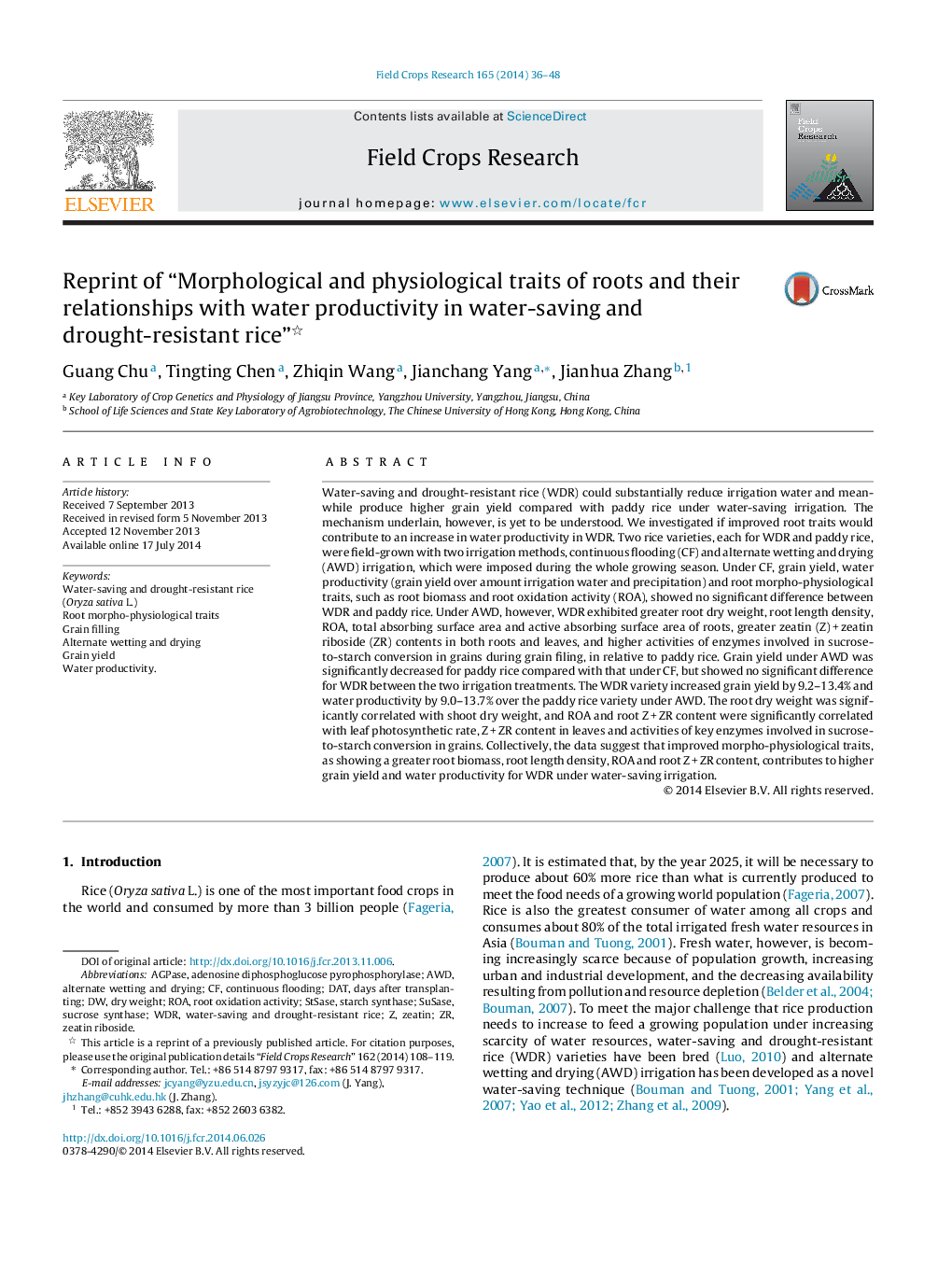| Article ID | Journal | Published Year | Pages | File Type |
|---|---|---|---|---|
| 6375011 | Field Crops Research | 2014 | 13 Pages |
Abstract
Water-saving and drought-resistant rice (WDR) could substantially reduce irrigation water and meanwhile produce higher grain yield compared with paddy rice under water-saving irrigation. The mechanism underlain, however, is yet to be understood. We investigated if improved root traits would contribute to an increase in water productivity in WDR. Two rice varieties, each for WDR and paddy rice, were field-grown with two irrigation methods, continuous flooding (CF) and alternate wetting and drying (AWD) irrigation, which were imposed during the whole growing season. Under CF, grain yield, water productivity (grain yield over amount irrigation water and precipitation) and root morpho-physiological traits, such as root biomass and root oxidation activity (ROA), showed no significant difference between WDR and paddy rice. Under AWD, however, WDR exhibited greater root dry weight, root length density, ROA, total absorbing surface area and active absorbing surface area of roots, greater zeatin (Z)Â +Â zeatin riboside (ZR) contents in both roots and leaves, and higher activities of enzymes involved in sucrose-to-starch conversion in grains during grain filing, in relative to paddy rice. Grain yield under AWD was significantly decreased for paddy rice compared with that under CF, but showed no significant difference for WDR between the two irrigation treatments. The WDR variety increased grain yield by 9.2-13.4% and water productivity by 9.0-13.7% over the paddy rice variety under AWD. The root dry weight was significantly correlated with shoot dry weight, and ROA and root ZÂ +Â ZR content were significantly correlated with leaf photosynthetic rate, ZÂ +Â ZR content in leaves and activities of key enzymes involved in sucrose-to-starch conversion in grains. Collectively, the data suggest that improved morpho-physiological traits, as showing a greater root biomass, root length density, ROA and root ZÂ +Â ZR content, contributes to higher grain yield and water productivity for WDR under water-saving irrigation.
Keywords
Related Topics
Life Sciences
Agricultural and Biological Sciences
Agronomy and Crop Science
Authors
Guang Chu, Tingting Chen, Zhiqin Wang, Jianchang Yang, Jianhua Zhang,
